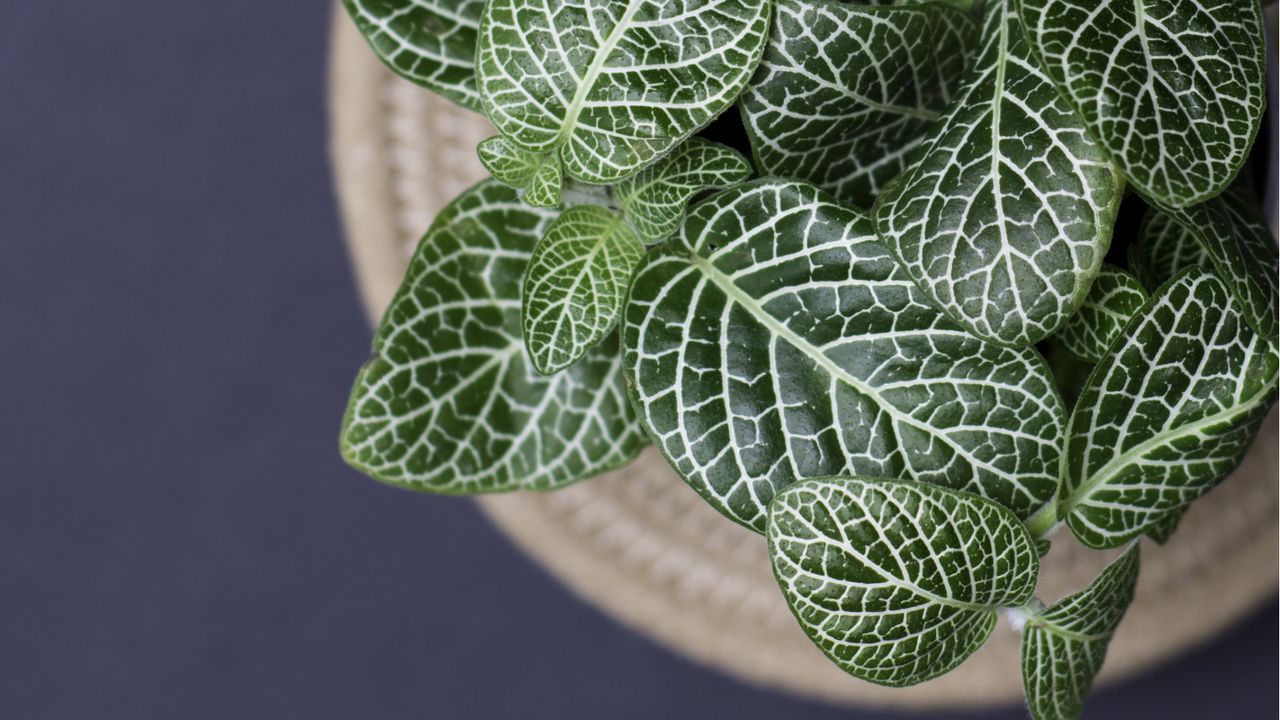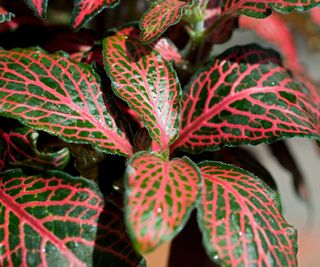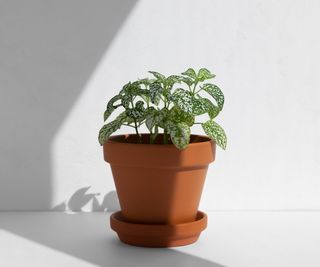Houseplant experts reveal the one reason your fittonia is drooping – plus tips on how to revive it
These plants are notorious for having dramatic reactions to improper care


I've worked hard to build my houseplant collection and the truth is it will never stop growing. When indulging in this hobby, I've come to learn the importance of smaller plants for filling gaps on your windowsill and presenting a more luscious indoor garden. However, the impact of this dense indoor foliage is only effective when all plants are in best health, and something like a fittonia drooping can throw off the whole display.
Even though they aren't the most difficult plants, you do need to know a few tricks for successful fittonia care. They react quickly to an improper growing environment with foliage that looks worse for wear. From drooping, to discoloring, and even leaf drop, your fittonia will quickly let you know it isn't happy.
In fact, the same goes for polka dot plants which have a similar appearance, often resulting in confusion over polka dot plant or fittonia. In any case, houseplant experts say there is usually only one reason behind a fittonia drooping - and it all has to do with how often you pick up your watering can.
Why is my fittonia drooping?

'Underwatering is absolutely the most common reason why fittonia plants will droop,' says Raffaele Di Lallo, plant expert from Ohio Tropics. 'And if you keep waiting, the entire plant will collapse. If there ever was a plant that does not tolerate drought at all, this is it,' he warns.
Fittonias are one the list of thirsty houseplants and don't do well with even short periods of drought. Therefore, leaving your fittonia to dry out completely can result in a fittonia drooping.
'Fittonia have thin leaves and so have no way of storing much water. Therefore, they need to be kept moist at all times,' explains Lisa Eldred Steinkopf, plant expert at The Houseplant Guru.
Establishing a watering regime that works for your plants can take some time and it can initially be hard to judge when to water indoor plants. For this reason, many plants become susceptible to both over and underwatering, leading to problems like drooping. Unlike cacti and succulents which store water in their leaves, fittonia need a consistent level of moisture to remain hydrated.
'It's best to ensure the soil remains consistently moist, but not waterlogged,' advises Alex Kantor, owner of Perfect Plants Nursery.
For this reason, use a soil moisture meter from Amazon to identify when your fittonia needs a top up. You should aim to only allow the top two inches to dry out.

Raffaele Di Lallo is the founder of the blog Ohio Tropics which focuses on the care of houseplants and other tropical plants, both indoors and outdoors. He has a large following on Instagram where he gives plant care tips and is the author of Houseplant Warrior: 7 Keys to Unlocking the Mysteries of Houseplant Care, published by Countryman Press.

Alex has worked in the horticultural industry for over 20 years and grew up on the farm since his childhood years. Alex is an expert on landscape trees, shrubs, and indoor plants. He is passionate about growing and helping others learn the trade.
How to revive a drooping fittonia

It is possible to revive a drooping fittonia, if it hasn't experienced full collapse and its roots are intact. Here's what plant experts recommend doing:
'Water the plant immediately,' says Raffaele. 'If your potting mix has gone completely dry for a long time, and the water seems to run right through the pot very quickly, then it will take a little bit more work.
'Peat-based potting mixes will become hydrophobic. This means they will repel water and top watering will not be effective unless you do it several times in a row,' he explains.
In this case, water your fittonia deeply and let it sit in a tray of water for a few hours to soak up sufficient moisture. 'You can then pick up the pot and you should be able to tell it has soaked up all it needs because it will be much heavier, but you should also use your finger to feel the potting mix,' Raffaele advises.
In order to do this successfully, it's best to grow your fittonia in a planter with drainage holes (like this one from Amazon). You should then soon see your fittonia perk up again.
'If it is too far gone, there may be consequences like yellowing leaves.' Lisa adds. Try using essential pruning tools, like these pruning snips from Amazon, to remove any discolored foliage, and make sure to provide optimal care going forward to encourage new growth. 'Be aware that it may not recover at this point,' Lisa warns.

Lisa is a houseplant expert who runs her blog The Houseplant Guru with over a decade of professional experience at Steinkopf Nursery and Garden Center in Michigan. As a child, Lisa helped her grandma tend to African violets and other houseplants. Since then, Lisa has forged a career providing houseplant advice, holding lectures and writing for publications across the US.
FAQs
Can a lack of light cause a fittonia to droop?
Yes, insufficient light levels can cause fittonia drooping, although it is unlikely to do so on its own. Underwatering is the main cause behind this common problem, whereas fittonias are indoor low light plants and can tolerate shadier growing environments to a certain extent. However, underwatering alongside lower light is likely to cause problems like drooping and leaf drop.
To prevent your fittonia drooping again, maintain consistent moisture levels and grow this plant somewhere bright. 'Fittonias also require high humidity levels,' says Alex Kantor, owner of Perfect Plants Nursery. 'Consider using a pebble tray to increase humidity,' he suggests. Alternatively, opt for another method of increasing humidity for indoor plants - like using this humidifier from Amazon.
Sign up to the Homes & Gardens newsletter
Design expertise in your inbox – from inspiring decorating ideas and beautiful celebrity homes to practical gardening advice and shopping round-ups.

Tenielle is a Gardens News Writer at Homes & Gardens. She holds a qualification in MA Magazine Journalism and has over six years of journalistic experience. Before coming to Homes & Gardens, Tenielle was in the editorial department at the Royal Horticultural Society and worked on The Garden magazine. As our in-house houseplant expert, Tenielle writes on a range of solutions to houseplant problems, as well as other 'how to' guides, inspiring garden projects, and the latest gardening news. When she isn't writing, Tenielle can be found propagating her ever-growing collection of indoor plants, helping others overcome common houseplant pests and diseases, volunteering at a local gardening club, and attending gardening workshops, like a composting masterclass.
You must confirm your public display name before commenting
Please logout and then login again, you will then be prompted to enter your display name.
-
 My cheap dehumidifier makes easy work of air drying laundry indoors despite the humidity of spring showers – get yours on sale for just $49 now
My cheap dehumidifier makes easy work of air drying laundry indoors despite the humidity of spring showers – get yours on sale for just $49 nowIt's useful for lots of things around my home
By Punteha van Terheyden Published
-
 Amber Lewis has used a completely unexpected finish on the walls of this bathroom remodel – it's made me reconsider my opinion of this rustic feature
Amber Lewis has used a completely unexpected finish on the walls of this bathroom remodel – it's made me reconsider my opinion of this rustic featureExposed brick walls are the most striking design feature in this bathroom
By Molly Malsom Published